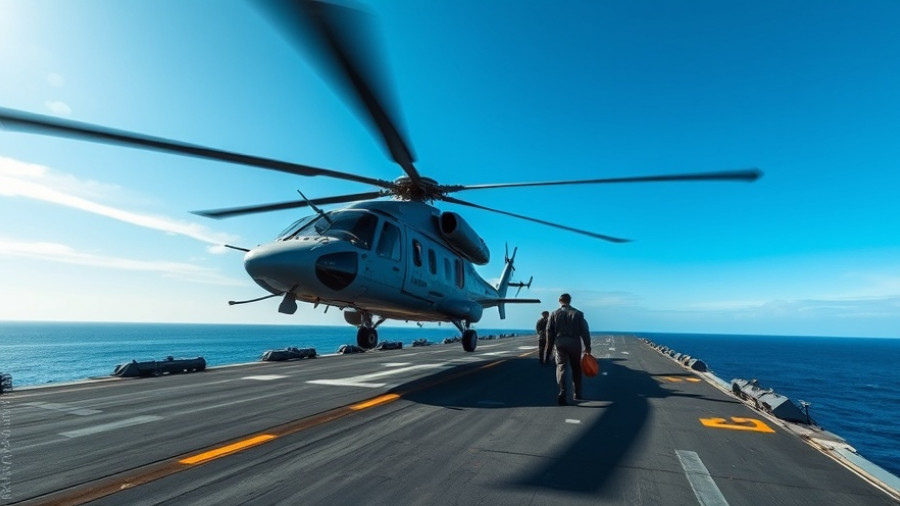
Rising Tensions: The U.S. Sends USS Gerald R. Ford to South America
The U.S. military's decision to deploy the USS Gerald R. Ford and its strike group to Latin America represents a significant escalation of military presence in a region where U.S. interests are critically intertwined with rising drug trafficking and political instability. Defense Secretary Pete Hegseth announced the deployment, emphasizing the aim of strengthening operations to monitor and disrupt illicit activities threatening American security.
Understanding the Strategic Deployment
Currently stationed in the Mediterranean, the USS Gerald R. Ford will join six other destroyers as part of an extensive naval force to bolster U.S. presence in the Caribbean Sea and waters adjacent to Venezuela. This expansion comes after a series of military strikes targeting drug smuggling operations associated with the Tren de Aragua gang. The Pentagon that describes these actions as a key element in combating narco-terrorism highlights how deeply intertwined military and domestic policies have become in the wake of increased drug trafficking from Latin America.
Escalating Military Action Against Drug Traffickers
The Pentagon has reported a surge in military strikes against suspected drug traffickers in the region, with the latest round of strikes bringing the death toll to at least 43. This increase marks a strategic shift in U.S. policy, treating drug traffickers similarly to terrorist organizations. "If you are a narco-terrorist smuggling drugs in our hemisphere, we will treat you like we treat Al-Qaeda," Hegseth declared. This parallels earlier strategies from the U.S. War on Terror, raising questions about the legal and ethical implications of such military actions.
The Stakes for U.S.-Latin American Relations
With the deployment of the USS Gerald R. Ford, the U.S. administration positions itself as a power actively combating drug cartels while simultaneously pressuring the Venezuelan government led by Nicolás Maduro. Speculation abounds regarding U.S. intentions, with some analysts suggesting that the military buildup is not merely about drugs but also a move to exert political influence in the region, urging alignment with U.S. interests.
Counterarguments: The War Powers Debate
Critics within both political parties have raised concerns regarding the legality of these military actions without explicit congressional authorization. Emphasizing checks and balances on military engagement, lawmakers have called for a reevaluation of the strategy that depersonalizes the conflict, potentially leading to unintended consequences in the form of destabilization in Latin America.
Emphasis on Diplomatic Solutions?
As military operations ramp up, it is critical to consider diplomatic avenues that could yield more sustainable solutions to drug trafficking problems in Latin America. Cooperation with regional governments through intelligence-sharing and joint operations may foster stability without resorting to armed conflict. Engaging with local communities to mitigate the drug trade is essential in addressing the root causes of crime and instability effectively.
Conclusion: Navigating Future Implications
The deployment of the USS Gerald R. Ford underscores a transformational era in U.S. foreign policy towards Latin America—one influenced by a complex web of drug trafficking, political challenges, and military operations. As the U.S. navigates this uncharted territory, it is vital to understand the broader implications of increased military presence and its impact on U.S. relations within the region. Will these military strategies act as a deterrent to drug flow, or could they escalate tensions further?
The call to action for citizens is to stay informed about these developments and consider the implications of military engagement in international affairs. Understanding the nuances of foreign policy can bolster public discourse and lead to a more engaged citizenry. Knowledge is a powerful tool in shaping future actions towards constructive solutions.
 Add Row
Add Row  Add
Add 




Write A Comment